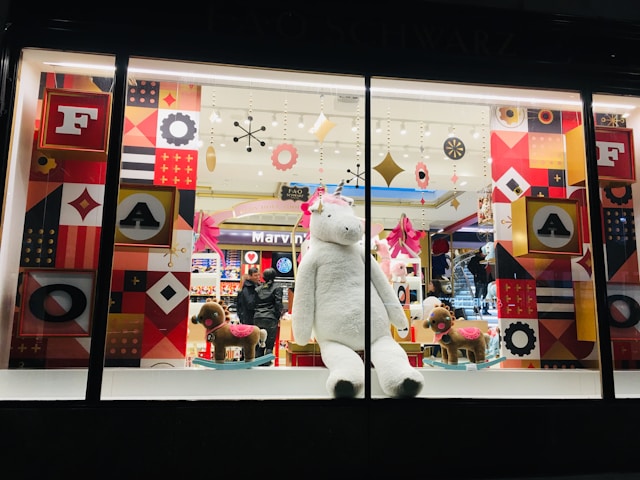Transform Your Retail Environment into a Powerful Marketing Tool
In the age of e-commerce, physical retail spaces must offer more than just products—they need to provide unforgettable experiences. Our Physical Space and Retail Behavioral Marketing strategies harness cutting-edge behavioral science to create immersive, persuasive shopping environments that drive sales and foster brand loyalty.
Understanding the psychological principles that drive consumer behavior is crucial for effective retail marketing. Let’s explore how behavioral science supports and enhances the strategies discussed in this post.
In-Store Layout and Customer Flow Design
- The Gruen Transfer: Named after architect Victor Gruen, this principle describes how a well-designed retail environment can transition customers from a task-oriented mindset to a browsing one.
- Gestalt Psychology: The principle of “proximity” in Gestalt psychology suggests that items placed close together are perceived as a group.
- Decision Fatigue: Research shows that decision-making depletes mental resources. Strategic product placement can reduce decision fatigue, making purchasing decisions easier for customers.
Digital Signage and Interactive Displays
- Dual Coding Theory: This theory suggests that verbal and visual information are processed differently. Digital displays that combine text and visuals can enhance information retention and influence purchasing decisions.
- The Zeigarnik Effect: This principle states that people remember uncompleted tasks better than completed ones.
- Social Proof: Social proof suggests that people look to others’ actions to guide their own. Digital displays showing product popularity or customer reviews can significantly influence purchase decisions.
Sensory Marketing
- Embodied Cognition: This theory suggests that physical experiences shape cognitive processes.
- Priming: Subtle sensory cues can unconsciously influence behavior.
- Processing Fluency: This principle suggests that the ease with which information is processed affects judgments. Sensory marketing can enhance processing fluency, leading to more positive product evaluations.
Omnichannel Behavior Tracking and Optimization
- Choice Architecture: Thaler and Sunstein’s (2008) concept of “nudging” through choice architecture can be applied across channels to guide customer behavior subtly.
- The IKEA Effect: This principle suggests that people value products more when they’ve invested effort into them. Omnichannel strategies that allow customers to customize or co-create products can leverage this effect.
- Cognitive Load Theory: This theory explains how cognitive resources are used in learning and problem-solving. A well-designed omnichannel experience can reduce cognitive load, making the shopping process more enjoyable and efficient.
By grounding our retail marketing strategies in these established psychological principles, we can create more effective, engaging, and profitable retail environments. The science of consumer behavior provides a roadmap for designing spaces and experiences that not only attract customers but also guide them towards making purchases and forming lasting brand relationships.
Why Focus on Physical Retail Behavior?
- Turn casual browsers into committed buyers through strategic store design
- Increase dwell time and purchase value with engaging, science-backed layouts
- Create memorable brand experiences that keep customers coming back
- Seamlessly integrate online and offline shopping journeys for modern consumers
What You’ll Learn
In-Store Layout and Customer Flow Design
Optimize store layouts to improve customer flow and enhance the shopping experience. In this section, you will learn:
Strategic Placement: Discover techniques for strategically placing products and displays to maximize visibility and sales.
Flow Design: Understand customer flow principles to ensure smooth store navigation, reduce congestion, and enhance the overall shopping experience.
Behavioral Insights: Apply behavioral insights to design store layouts that encourage customer exploration and increase dwell time.
Digital Signage and Interactive Displays
Use digital signage and interactive displays to engage customers and influence their purchasing decisions. Here, you will explore:
Dynamic Content: Learn how to create dynamic, attention-grabbing content for digital signage that adapts to customer behavior and preferences.
Interactive Experiences: Implement interactive displays that provide personalized experiences, making shopping more engaging and informative.
Influence Techniques: Discover techniques for using digital signage to highlight promotions, new arrivals, and featured products, driving customer action.
Sensory Marketing (Sight, Sound, Smell, Touch)
Leverage sensory marketing techniques to create memorable and impactful retail experiences. This section covers:
Multisensory Engagement: Explore how combining visual, auditory, olfactory, and tactile stimuli can create a rich, immersive shopping experience.
Emotional Connections: Understand how sensory marketing can evoke emotions and build stronger connections between customers and your brand.
Case Studies: Review case studies of successful sensory marketing campaigns and learn how to apply these principles to your own retail space.
Omnichannel Behavior Tracking and Optimization
Track and optimize customer behavior across online and offline channels for a seamless shopping experience. In this section, you will learn:
Integrated Tracking: Discover methods for tracking customer interactions across multiple channels, from in-store visits to online activity.
Behavioral Data Analysis: Use behavioral data to gain insights into customer preferences and behaviors, informing your marketing and operational strategies.
Seamless Experience: Implement strategies to ensure a consistent and cohesive shopping experience, regardless of the channel or touchpoint.
Ready to Elevate Your Retail Space?
Explore each section to gain comprehensive insights into physical space and retail behavioral marketing. Equip yourself with the knowledge and tools to transform your retail environment into a space that captivates and influences your customers.
Contact us today to learn more about how our expertise in retail behavioral marketing can transform your business and enhance the shopping experience.
